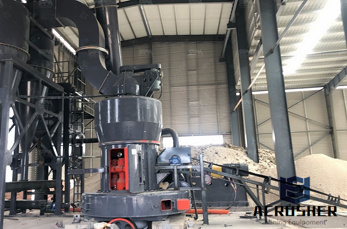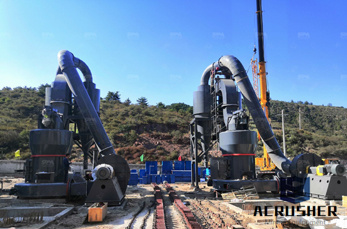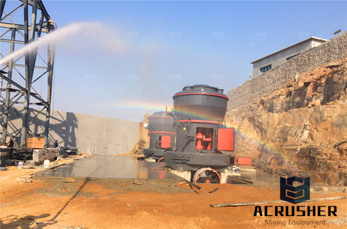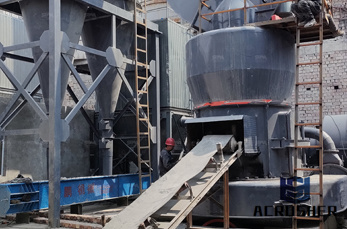Extraction of Metals from Boiler Slag by Sintering ...
A new method of recycling aluminum and iron in boiler slag derived from plants that use coal as fuel was presented. The new method can integrate efficient extraction and reuse of the leached ...
 WhatsApp)
WhatsApp)
A new method of recycling aluminum and iron in boiler slag derived from plants that use coal as fuel was presented. The new method can integrate efficient extraction and reuse of the leached ...

The iron is reduced from the ore by carbon in the coke, the limestone aiding slag separation from the molten iron. The slag and molten iron are tapped off from the bottom of the furnace, the slag being disposed of and the molten iron being poured into molds were it solidifies, now being in the form of pig iron.

Jul 21, 2014· Iron ores are reduced by coke (carbon) in a blast furnace. The process is summarised in the diagram below. Hottest part of the furnace At the bottom of the furnace, adjacent to the hot air blast entry points, the temperature reaches around 1800ºC, and represents the hottest part of the furnace. Ascending vertically, the furnace temperature.

in a huge container called a blast furnace. Iron ores such as haematite contain iron(III) oxide, Fe 2 O oxygen must be removed from the iron(III) oxide in order to leave the iron behind.

raw materials in extraction of iron raw materials in extraction of iron Steel Raw Materials Iron, Ore, Carbon, and Oxygen JRank Articles. The three raw materials used in making pig iron (which is the raw material needed to make steel) are the processed iron ore, coke (residue left after heating coal.

CaO now reacts the impurities of ore called GANGUE to form slag. Slag is the mixture of CaSiO 3 and Ca(AlO 2) 2. The slag floats over the top of molten iron. Slag is a useful byproduct. It is used in road making, cement manufacturing a light weight building materials.

describe and explain the main reactions involved in the extraction of iron from iron ore ... The slag also flows to the bottom of the furnace but is less dense than the Iron and so floats on top, ... 3 Extracting Iron ...

Plant For Extraction Of Iron Ore From Slag. Processing Hematite Ore for Titanium Extraction . Laboratory Testing General Mineral Processing Engineering . the rest of the slag will be treated for costly extraction of . the iron and steel plants.

It is in the blast furnace that extraction of iron occurs. The extraction of iron from its ore is a long and subdued process, that helps in separating the useful components from the waste materials such as slag. What happens in the Blast Furnace? The purpose of a Blast Furnace is to reduce the concentrated ore chemically to its liquid metal state.

How to separate coal from slag Home > Sand Maker, Sand Maker Machine, Mobile Crusher For Sale > how to separate coal from ore separation process and coal slag processing | Business. Coal slag processing equipment used inside the coal preparation plant primarily which includes coal slag crushers, coal. Get Details

Describe the essential reactions in the extraction of iron in the blast furnace. An ore is a rock from which metals can be extracted. The main ore of iron is hematite, which contains large amounts of iron(III)oxide. It is reduced by carbon to for iron, but this takes place in a huge blast furnace.

Start studying CHAPTER 11 IRON AND STEEL PRODUCTION. Learn vocabulary, terms, and more with flashcards, games, and other study tools. ... The extraction of iron from its ore (hematite, magnetite) is performed in the ??? ... A pool of molten crude iron forms at the bottom with slag floating on top. Slag contains: Ca and AL silicates, Ash from ...

Extracting iron from iron ore using a Blast Furnace. The common ores of iron are both iron oxides, and these can be reduced to iron by heating them with carbon in the form of coke. Coke is produced by heating coal in the absence of air. Coke is cheap and provides both the reducing agent for the reaction and also the heat source.

Subsequent increase in temperature to 1200°C improves the extraction of iron. In the indirect reduction of slag at temperatures above its melting point, metallic iron is mainly concentrated at the outer surface of the product, forming large inclusions that are easily extracted by magnetic separation.

Sep 04, 2012· Impacts on the environment due to the extraction of iron from haematite does not only start during the extraction of iron from the ore it starts when the raw materials are being mined and transported. The following are problems which arise from these processes: From mining and transporting of raw materials Air pollution Noise pollution

The smelting of copper, lead and bauxite in nonferrous smelting, for instance, is designed to remove the iron and silica that often occurs with those ores, and separates them as ironsilicatebased slags. Slag from steel mills in ferrous smelting, on the other hand, is designed to minimize iron loss and so mainly contains oxides of calcium ...

Nov 19, 2018· For the production of steel, there is a need for iron raw material in the form of iron ore or scrap metal, together with alloying elements so that the material acquires the desired for properties. In the production of orebased steel, coal is also needed as a reducing agent and limestone as a slag former.

Nov 02, 2012· > Mining Equipment > extracting precious metals from slag using induction furnace; Print. extracting precious metals from slag using induction furnace. ... Describe the extraction of iron in the blast furnace, ... The recovery of precious metals from coal furnace slag .

Nov 14, 2017· limestone is used to remove impurities in the furnace and the main impurity of the blast furnace is silica (sand and rock) which is silicon dioxide. silicon dioxide is a solid at furnace temperatures so it reacts with calcium oxide from the decomp...

Extraction of Metals. Edexcel IGCSE Coordinated Science Syllabus. STUDY. PLAY. ... A form of carbon, made from coal. Describe the essential reactions in the extraction of iron in the blast furnace. ... extraction of iron in the blast furnace. Slag Used in making roads.

Vanadium processing, preparation of the metal for use in various products.. Vanadium (V) is a grayish silver metal whose crystal structure is a bodycentred cubic (bcc) lattice, with a melting point of 1,926° C (3,499° F). The metal is used principally as an alloying addition to highstrength lowalloy (HSLA) steels and, to a lesser extent, in tool steels and iron and steel castings.

Extraction of Metals. Extraction of Iron.. Iron is extracted from its ore in the blast furnace.. The main iron ore is called haematite. Haematite is iron(III) oxide Fe 2 O 3. The iron ore contains impurities, mainly silica (silicon dioxide). Limestone (calcium carbonate) is added to the iron ore which reacts with the silica to form molten calcium silicate in the blast furnace.

The process of extracting iron from ore produces great quantities of poisonous and corrosive gases. In practice, these gases are scrubbed and recycled. Inevitably, however, some small amounts of toxic gases escape to the atmosphere. A byproduct of iron purification is slag, which is produced in huge amounts.

May 22, 2009· Testing Zone.. Match the following: a) Haematite a) Extraction of Iron b) Calcination b) Ore of Iron c) Smelting c) CaSiO3 d) Slag d) Acts as Flux e) Lime Stone e) Type of Iron f) Heating in absence of air. 18. Testing Zone..
 WhatsApp)
WhatsApp)